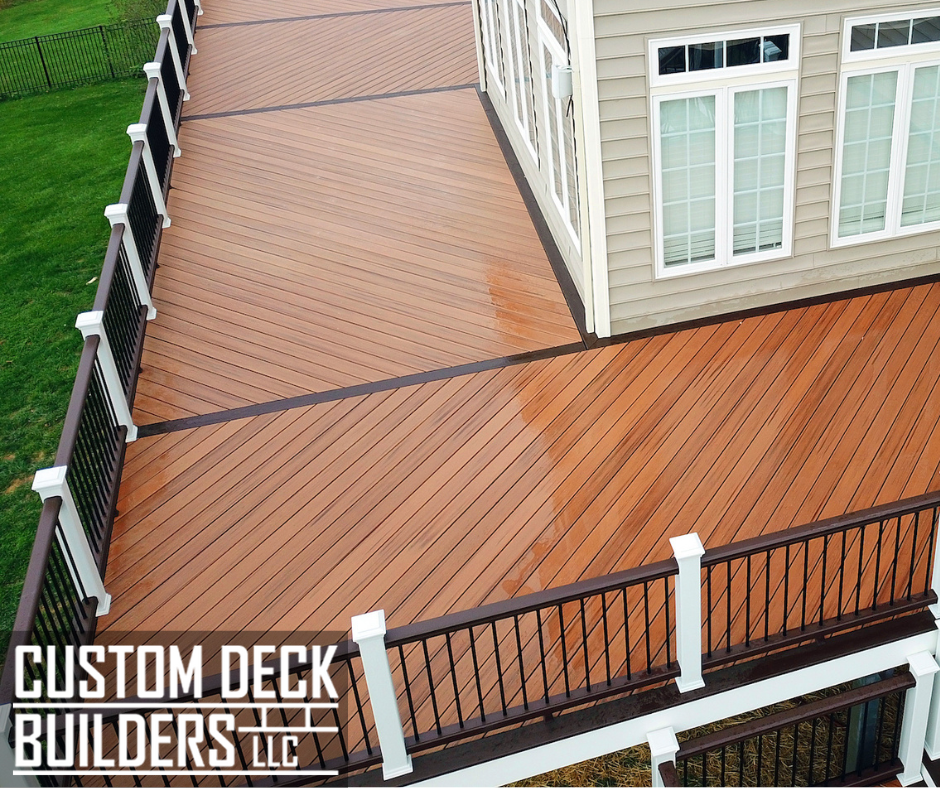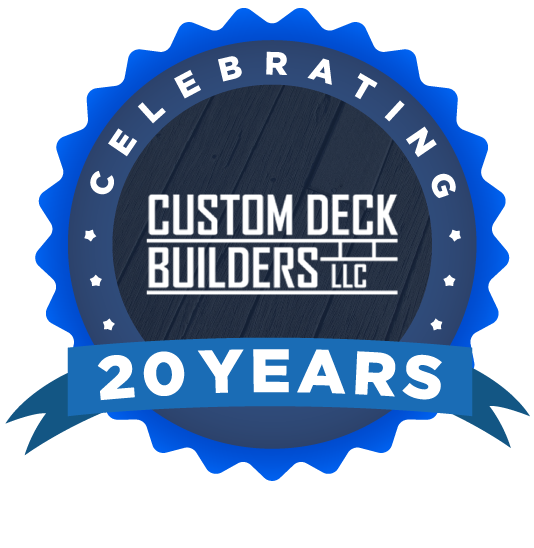When planning a new deck, one of the first decisions homeowners face is what material to use. Pressure-treated lumber has long been a popular choice thanks to its affordability and durability. But is it the right fit for your project?
At Custom Deck Builders, we’ve worked with homeowners across Maryland to design and build decks using a variety of materials—including pressure-treated lumber, composites, and hardwoods. If you’re considering pressure-treated wood for your deck, here’s a breakdown of the pros and cons to help you make an informed decision.

The Pros of Pressure-Treated Lumber
Budget-Friendly
Pressure-treated wood is one of the most cost-effective options for deck building. It’s typically more affordable than composite decking or tropical hardwoods, making it an attractive choice for homeowners looking to maximize their budget or build larger decks without significantly increasing costs.
Readily Available
Because it’s widely produced and distributed, pressure-treated lumber is easy to source in a variety of dimensions and grades. This can help speed up the building process and offer flexibility in design.
Resistant to Decay and Insects
Pressure-treated lumber is chemically treated to resist rot, decay, and insect damage—common concerns for outdoor structures exposed to moisture and pests. This makes it a practical choice for Maryland’s humid summers and variable weather.
Easy to Work With
For builders and DIYers, pressure-treated lumber is easy to cut, fasten, and shape, allowing for a wide range of design options, from simple platforms to multi-level decks with built-in seating and railings.
The Cons of Pressure-Treated Lumber
Maintenance Requirements
Unlike composite or PVC decking, pressure-treated wood requires regular maintenance to keep it looking good and performing well. This includes:
- Sealing or staining every 1–2 years
- Periodic cleaning to prevent mold and mildew
- Inspecting for cracks, splinters, or warping
Neglecting maintenance can shorten the lifespan of your deck and lead to costly repairs.
Susceptibility to Warping and Splintering
While pressure-treated lumber is treated to resist decay, it’s still a natural wood product. Over time, it can warp, crack, or splinter, especially if not properly sealed or exposed to extreme weather fluctuations.
Chemical Treatment Concerns
Some homeowners express concerns about the chemicals used to treat the wood, particularly when it comes to children and pets. Modern pressure-treated lumber uses safer preservatives than in decades past, but those with sensitivities or environmental concerns may prefer alternative materials.
Aesthetic Limitations
Pressure-treated wood typically has a more rustic, utilitarian appearance compared to the smooth, uniform look of composite decking or the rich tones of hardwoods. While staining can enhance its appearance, some homeowners may find it less visually appealing.
Is Pressure-Treated Lumber Right for Your Deck?
Pressure-treated lumber can be a practical, budget-conscious choice for many homeowners—especially for those who are willing to commit to regular upkeep. However, if you’re looking for a lower-maintenance or more upscale aesthetic, you may want to explore alternatives like composite decking or exotic hardwoods.
Let’s Build Your Dream Deck Together
Whether you’re leaning toward pressure-treated lumber or exploring composite and hardwood alternatives, Custom Deck Builders is here to bring your vision to life. Our team provides expert advice, skilled craftsmanship, and personalized service from concept to completion.
Ready to start planning your new deck? Contact Custom Deck Builders today to schedule a consultation and discover the perfect material for your outdoor space.






